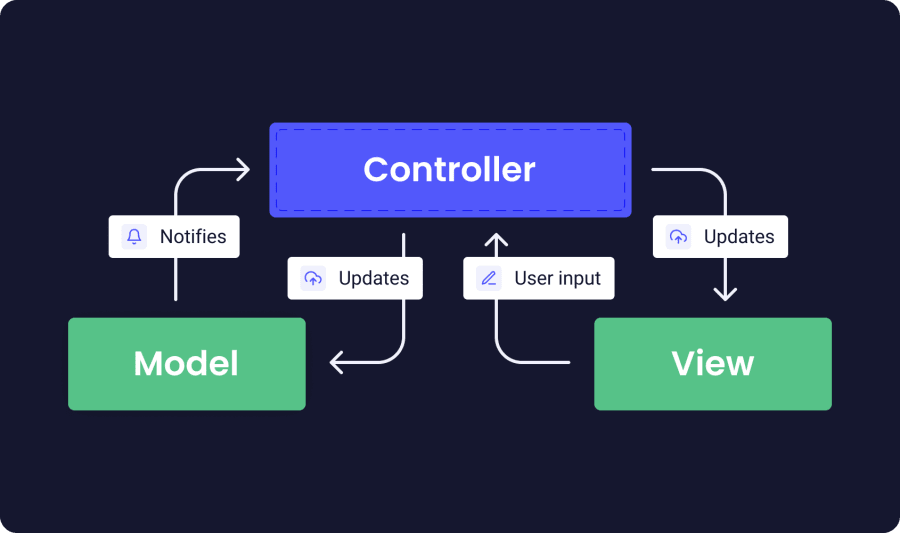NEW
Proxify is bringing transparency to tech team performance based on research conducted at Stanford. An industry first, built for engineering leaders.
Learn more
Software Engineering
Webdevelopment
Aug 08, 2022 · 4 min read
Ten reasons why Laravel is the best PHP framework
According to W3Techs' data, PHP is used by 78.9% of all websites with a known server-side programming language. So 8 out of every ten websites you visit on the Internet use PHP.
Ardit Xhaferi
Fullstack ontwikkelaar
Verified author

Inhoud
- Why should I care about PHP frameworks anyways?
- 1. Composer
- 2. Artisan CLI
- 3. File systems
- 4. Broadcasting and events
- 5. Model-View-Controller support
- 6. Authentication and authorization
- 7. Unit testing
- 8. Scheduler: scheduling tasks
- 9. Blade: templating engine
- 10. Eloquent: object-relational mapping
- Vind een ontwikkelaar
If you are a web developer, you probably use PHP. For a developer, time is valuable, and you shouldn't spend time creating things that were implemented successfully years ago in Laravel.
In this article, I will try to convince you why this framework is the best for PHP and will make your dev life a lot easier.
Why should I care about PHP frameworks anyways?
Well, to start answering this question, I first want to elaborate on what we understand by the word “framework.”
A framework is a system that you can build software on top of. It serves as a basis, so you're not starting entirely from scratch.
As web developers, we shouldn't waste time creating things like login systems repeatedly when it’s already done in a safe and efficient framework method. And the one with the best basis for web development in PHP is Laravel. Why? I’ll give my ten reasons below.
Versterk je team
De techprofessionals van Proxify zijn een waardevolle aanvulling op je team en bieden deskundige, duurzame oplossingen. Met een bewezen trackrecord in meer dan 500 sectoren werken onze specialisten moeiteloos mee aan je projecten. Zo helpen ze je bedrijf aan versnelde resultaten en blijvend succes.
1. Composer
A packaging system takes care of the various supporting programs or libraries that enable the web application to automate the procedure.
To maintain all the data required to manage packages, Laravel uses a composer for dependency management.
Packages offer the functionality we need right out of the box, which is a terrific method to speed up development. Some of the top Laravel packages are from Spatie – check them out.
2. Artisan CLI
Artisan is the name of Laravel's CLI-[Command-Line-Interface]. Artisan is commonly used for publishing package assets, database migration management, and seeding and generating boilerplate code for new controllers, models, and migrations.
This CLI relieves the developer of the burden of creating code skeletons. Artisan's functionality and capabilities can be expanded by implementing new custom commands.
3. File systems
Additionally, Laravel includes built-in support for local storage and cloud storage services like Amazon S3 and Rack space Cloud Storage. Since the API is the same for each system, switching between different storage alternatives is remarkably easy. To serve files from many places like in a distributed environment, one can employ all three technologies together in a single application.
4. Broadcasting and events
To incorporate real-time data, show live feeds, etc. In current online applications, Laravel provides a notion called broadcasting. You can access real-time data from the application by using broadcasting, which enables you to share the same event name between the server-side and client-side of your application.
5. Model-View-Controller support
Out of the box, Laravel has Model-View-Controller support. It’s a software architectural pattern that divides the application into three components that helps in areas such as: “simultaneous development,” “scalability,” and “reusability,” etc.

6. Authentication and authorization
The Authentication and Authorization system is already configured by default in Laravel. Your application will have a secure login system in just a few artisan instructions, this will take some stress of you having Laravel handle security because it’s well used and open source.
7. Unit testing
When it comes to testing the application, Laravel, by default, offers the unit test for the app, which also includes tests to find and stop framework regressions. In a Laravel application, integrating PHP unit tools like a testing framework is fairly simple. Additionally, using the artisan CLI tool, we can execute unit tests.
8. Scheduler: scheduling tasks
The Artisan command-line tool now includes Scheduler, which enables programmatic scheduling of tasks that are carried out on a recurring basis. Scheduler internally uses the cron daemon to launch a single Artisan job, which then performs the configured tasks.
9. Blade: templating engine
Blade Template Engine is the default template engine included with Laravel. The Blade templating engine combines templates with a data model to create the final views. For faster performance, the templates are converted into cached PHP code. Additional control structures offered by Blade include conditional statements and loops.
10. Eloquent: object-relational mapping
An ORM is software that simplifies the handling of database records by representing them as objects. Laravel's built-in ORM implementation is the Eloquent ORM. In comparison to other frameworks, Laravel has the best Object-Relational Mapper, and I have to add that Eloquent makes working with Relationships really easy and clean.
Was this article helpful?
Vind jouw volgende ontwikkelaar binnen enkele dagen, niet maanden
In een kort gesprek van 25 minuten:
- gaan we in op wat je nodig hebt om je product te ontwikkelen;
- Ons proces uitleggen om u te matchen met gekwalificeerde, doorgelichte ontwikkelaars uit ons netwerk
- delen we de stappen met je om de juiste match te vinden, vaak al binnen een week.
